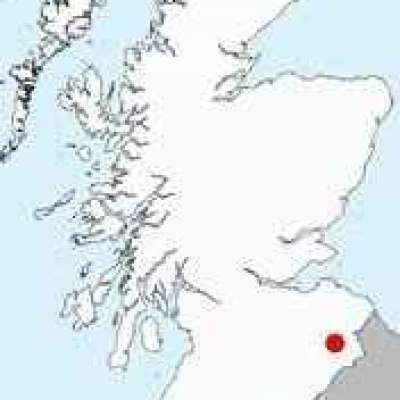WARS BETWEEN SCOTLAND AND ENGLAND
The Rough Wooing / Battle of Ancrum Moor (1545)
The Battle of Ancrum Moor was fought during the War of the Rough Wooing in 1545. The Scottish victory put a temporary end to English incursions in the Scottish border and lowlands. The battlefield has been included in the Inventory of Historic Battlefields in Scotland and protected by Historic Scotland under the Historic Environment (Amendment) Act 2011.
Campaign
Henry VIII ordered the Earl of Hertford to devastate Edinburgh, Leith and many other towns. Hertford dutifully laid waste to much of southern Scotland in two expeditions in 1544, burning Edinburgh in May.
In 1545, an army under Sir Ralph Eure (alternatively spelt "Evers" continued to pillage in the Borders. Perhaps their worst atrocity was the burning of Brumehous Tower with the lady of the house and her children and servants inside. The attacks had forged an unlikely alliance between the Earl of Arran, Regent for the infant Mary, and the Earl of Angus. These two Scottish nobles had long been bitter rivals for many years, and had even fought a pitched battle in the streets of Edinburgh in 1520. However, Angus's estates had been targeted during the recent border raids. Angus learned that Eure had been granted some of his lands in the Scottish borders by Henry VIII, and he declared that he would witness the title deeds with a sharp pen and red ink. Internal Scottish politics were set aside, Arran and his rival for power Mary of Guise were reconciled with the Earl of Angus and his brother George Douglas of Pittendreich at the Parliament of Scotland in December 1544, when the Douglases were pardoned for their previous treasons with England.
The Scottish army consisted initially of between 300 and 1,000 "lances" under Angus, and a similar number of troops from Fife under George Leslie, 4th Earl of Rothes and Norman Leslie, Master of Rothes. They were joined by Borderers under Scott of Buccleuch, whose lands had also suffered devastation at Eure's hands. Together, they moved to confront the English army near Jedburgh.
Battle
The English Army consisted of 3,000 German and Spanish mercenaries, 1,500 English borderers under Sir Brian Layton and 700 "assured" Scottish borderers. As they settled into an encampment under Gersit Law, a small Scottish force made a feint attack and then retreated southwest towards Palace Hill. Much of the English force followed in pursuit. As they crossed the top of Palace Hill and chased down the far side, they found that the whole Scottish army had been hidden on the far side of the hill. The Scots had the advantage of surprise, and of the setting sun which was behind them, dazzling the English, and of the westerly wind which blew gunpowder smoke from arquebuses and pistols towards the English.
A charge by Scottish pikemen drove the English back in disarray. Here the longer Scottish pikes were used to advantage;
"the Scottismen's speares war longer then the Inglismen's be fyve quareteris, or an elne, quhilk, when they joyned with the Inglishmen, they had thame all rivin doune before evir the Inglishmenis speares might touch thame."
The ground was too uneven for the English to rally at the top of Palace Hill. As they tried again to rally on the eastern slope, the Scottish Borderers with them chose to tear off the red crosses which signified their adherence to England and revert to their former allegiance. The English army broke and was forced to scatter through a hostile countryside.
Outcome
The English lost 800 men killed (including Eure and Layton) and 1,000 taken prisoner. This temporarily stopped their harrying of Scotland. News of the victory also induced Francis I of France to send troops to aid the Scots, although they achieved little. The war came to an end shortly afterwards on the death of Henry VIII, only to break out again with perhaps even more violence when Hertford, now Protector Somerset ruling on behalf of Edward VI, sought to impose his own political and religious settlement on Scotland.
More Info:
https://en.wikipedia.org/wiki/....Battle_of_Ancrum_Moo

